Jeff Janis personifies the American Dream, and you hate him for it.
Unlikely Polarization
Jeff Janis is the last person in sports that seems to care about his public perception. Janis does not engage with vitriolic trolls on social media and his disposition in interviews suggests a deference bordering on complete oblivion to either extreme of a curiously polarizing NFL breakout story.
According to my patent-pending mainstream popularity algorithm, a wide receiver equivalent of the anti-Cam Newton who breaks out in story book fashion should be the darling of middle America. The physically imposing, yet pathologically humble small school wide receiver desperate to please his coaches who rises out of a sports world primordial soup should be America’s next can’t-miss football sweetheart. The seventh round draft pick from Tawas City, Michigan that few NFL scouts took seriously who then erupts on the biggest possible stage at the most critical possible time should be waved around as the personification of the America Dream.
Shoulda. Woulda. Coulda.
Did Fox interview Jeff Janis in the wake of his playoff heroics? No. Did ESPN interview Jeff Janis? No. Did Matthew Berry mention Janis as one fantasy football’s top sleepers for 2016? No. After one of the most impressive big game performances by a wide receiver in recent memory, Jeff Janis did not head to Bristol, CT or Los Angeles, CA or Orlando, FL, he headed into the woods to take down a monster buck on Driven with Pat and Nicole. Jeff Janis feels like a supernova that burned hottest for one game never to be seen in the universe again.
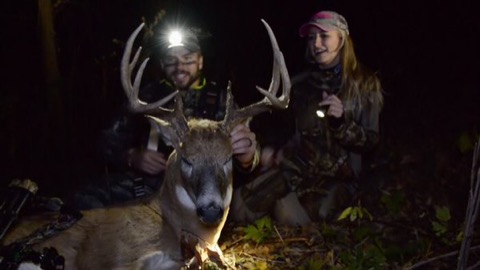
Jeff Janis with his trophy mule deer.
In the vacuum of outer space, Jeff Janis looks like the feel good story that Rosemary Plorin wanted her daughter to witness that fateful day in Charlotte, NC. But a funny thing happened last month in fickle America. Nothing. Nothing became of Jeff Janis. The hype train pistons never fired. No smoke billowed. No effusive fantasy football narratives were weaved by football guys. Today, it feels as if the Jeff Janis starburst never existed, and I want to find out why.
Who is Jeff Janis?
Jeff Janis started every game for Saginaw Valley State University in his junior season (2013), finished second in the nation with 106-receptions, and led Division II with 1,635-receiving yards setting SVSU’s single-season record. Janis was then drafted by the Green Bay Packers with the 21st pick in the seventh round. If the Packers had not pushed the button, Janis would have likely gone undrafted in 2014 NFL Draft.
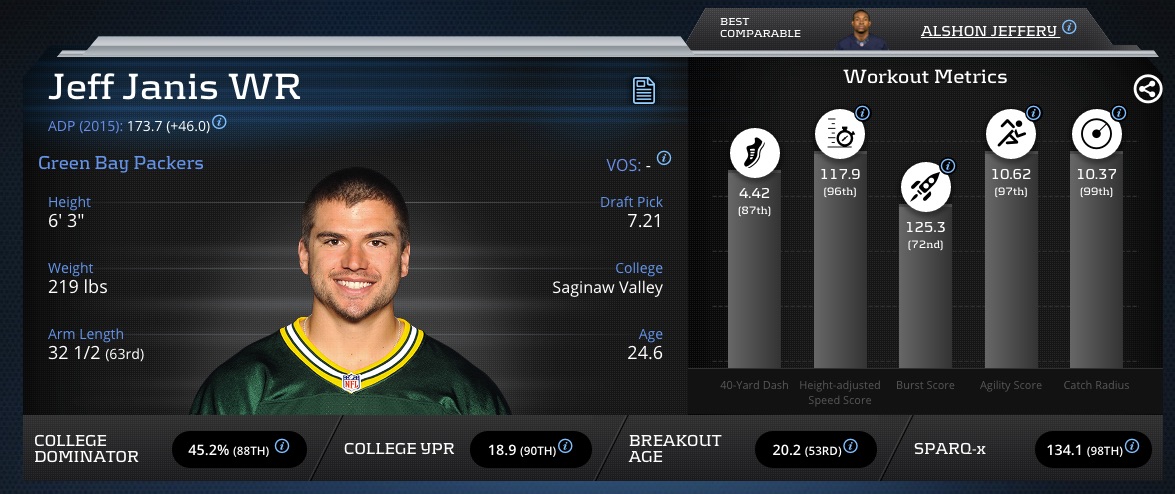
Jeff Janis Advanced Metrics Profile
Jeff Janis was a big, productive, and athletic college prospect. He was one of very few wide receivers to enter the NFL with a profile totally devoid of red flags. Yet 29 receivers were selected ahead of Janis in the 2014 NFL Draft, many of which, from Marqise Lee to Shaq Evans to Walt Powell, were blatantly inferior prospects. Here is an overview of Janis’ key prospect profile metrics:
• Stature: 6-3, 219-pounds, 32.5-inch arms
• Production: Dominator Rating: 45.2-percent (88th-percentile), College YPR: 18.9 (90th-percentile), Breakout Age: 20.2 (53rd-percentile)
• Athleticism: 4.42 (87th-percentile) 40-Yard Dash, 125.3 (72nd-percentile) Burst Score, 10.62 (97th-percentile) Agility Score, 10.37 (99th-percentile) Catch Radius, and 134.1 (98th-percentile) SPARQ-x Score.
Jeff Janis‘ exceptional prospect profile features zero metrics under the 50th-percentile. Only a handful of wide receiver prospects over the last ten years check all the boxes in such spectacular fashion.
What about Jordy Nelson, Janis’ All-Pro teammate? Not even close. Nelson’s burst and agility both checked in under 25th-percentile, and his SPARQ-x was more than 30-points lower than Janis.
Does Kevin White, the athletic specimen of the 2015 draft class check all the boxes? Nope. Not only did White post an underwhelming 13.3 YPR his final season at West Virginia, he broke out at age 21.2, well older than the average NFL wide receiver breakout age (Janis broke out a full year earlier at the college level).
How about Julio Jones, the premier athlete at the position? Not exactly. Jones’ College Dominator Rating checked in approximately 5-percentage points lower than Janis, and Jones’ yards per reception was under the 50th-percentile in his final season at the University of Alabama.
What about Alshon Jeffery, Jeff Janis‘ best comparable player on PlayerProfiler.com? Ding! Like Janis, Jeffery had no red flags on his profile coming out of college, but his stock fell in the draft due to unfalsifiable anecdotal criticism.
Other NFL wide receivers with no prospect profile metrics under the 50th-percentile include Larry Fitzgerald, Calvin Johnson, and Odell Beckham (though OBJ’s size is below average). Good company.
How were 29 wide receivers selected ahead of Jeff Janis in 2014? The 2014 WR class was historic, which pushed a handful of other size-speed specimens such as Donte Moncrief and Martavis Bryant, out of the top-60 picks. Scouts also unfairly discounted Jeff Janis for having small hands. Beyond measurables, scouts questioned every aspect of Janis’ game from his “mental processing” to his “feel for the game” to his “hip fluidity.” The tape grinder community piled on tagging Janis with the dreaded “body catcher” label amidst a waterfall of baseless and/or irrelevant observations. More than any of the real or imaginary flaws in Janis game, nothing hurt his draft stock than simply hailing from a Division II university.
Small School Factor
The anecdotal criticisms could have been overcome with the help of a major conference program’s caché. After quarterback, few positions are as heavily-dependent on program size and clout as wide receivers. NFL player personnel staff recognize that even the most polished prospects from power conferences take years to master the position, removing most Division II and Division III prospects from draft day consideration. Vincent Jackson caught less than 75 passes during his first three years in the NFL. Julian Edelman caught less than fifty passes through his first three years. Even an otherwise precocious prospect such as Victor Cruz went undrafted, and then spent his entire rookie year in practice squad purgatory. John Brown and T.Y. Hilton are outliers. Albert Wilson and Tre McBride are the rule.
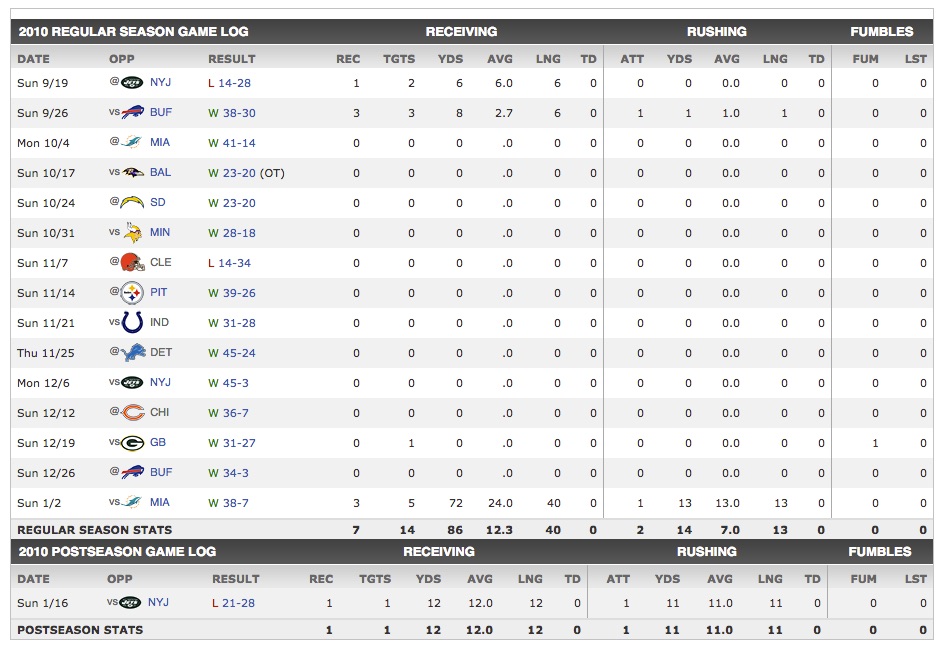
Julian Edelman 2010 Season Game Log (Year 2)
Does Draft Capital Matter?
NFL general managers punted Jeff Janis to the mid-seventh round during the 2014 NFL Draft, because they viewed Janis as a developmental receiver from a small school that would not realistically be ready to play significant NFL snaps on offense until his third year in the league. Through this prism, Janis’ draft day slide was inevitable.
Though Jeff Janis‘ slide to pick No. 236 was in many ways inevitable, it was not necessarily rational. Rather, Janis’ seventh round draft capital exemplified the subversive stylistic bias that infects many scouting reports. References to Janis’ his “stiff hips” and “weak hands” were at best irrelevant, and at worst, blatant falsehoods. These reports informed the general view that Janis was “raw,” and therefore, unlikely to contribute early in his career.
Regardless of how the scouting report sausage was made, Jeff Janis‘ resume officially lists him as a seventh round pick. For many dynasty league enthusiasts, draft capital defines the prospect’s potential. Alas, Janis’ seventh round draft slot doomed him before his first mini camp practice in the eyes of most fantasy footballers.
How much does draft capital matter? As discussed in my recently published Dynasty Dominator Guide:
In dynasty leagues, draft capital is utilized less to project opportunity, and more to measure the intrinsic quality of a player. Unfortunately, many dynasty analysts overvalue the predictive power of draft capital as a standalone input factor. Too often you read, “Player X isn’t a good football player” based on nothing other than his 7th round draft position. This implies NFL scouts are all-knowing.
Most NFL scouts know what they are doing most of the time. Specifically, the scouting community generally evaluates players from big programs with reasonable accuracy — Laron Byrd was undrafted for a reason. But for every Laron Byrd from Miami there is a Marques Colston from Hofstra. The most common and egregious type of NFL scouting blunder is missing future stars from small schools such as Victor Cruz and Antonio Brown. NFL scouts get it right more often than they get it wrong, but they are far from infallible.
Precisely 10-percent of late round WRs become 3-year NFL starters. This may seem like a small percentage, but is works out to multiple wide receivers each year that 32 different teams and hundreds of professional player personnel staffers whiffed on. After taking a job with the Cleveland Browns, Paul DePodesta was asked about the one aspect of football that he immediately realized was different than baseball. A week into the job, DePodesta was immediately struck by the number of undrafted players who became productive NFL starters and valuable playmakers.
Weighting draft capital as a standalone prospect evaluation criterion is bad process. Because other factors such as size, college production, and athleticism are already baked into a player’s draft position to a degree, heavily weighting it as an input factor double-counts the same information. Most scouts are looking at the same criteria that draft analyst care about. If Julio Jones ran a 4.60, he would not have been a first round pick. For dynasty league enthusiasts, draft capital quantifies the je ne sais quoi (feel for the game, understanding of the nuances of the position) that scouts perceived in a particular player. Scouts clearly saw significant je ne sais quoi when evaluating Julio Jones during the pre draft process and saw significantly less when evaluating Stephen Hill. Otherwise, Hill would have been a top-10 pick given his relative size, relative production and athleticism.
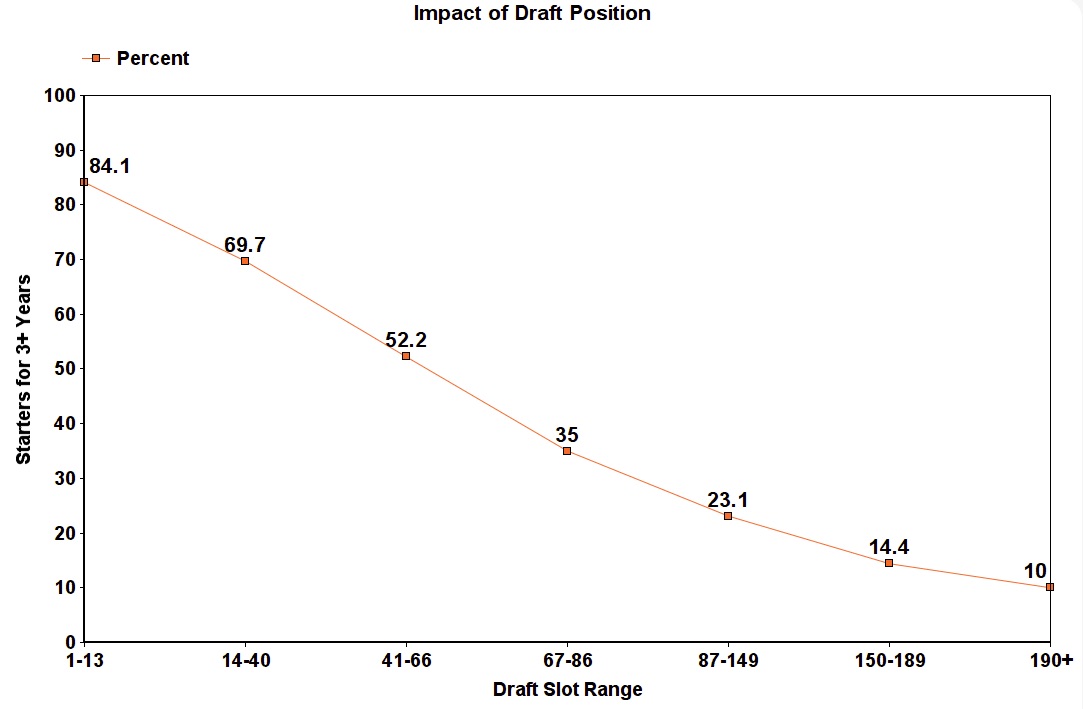
Three Year Starters by Draft Slot
Early round picks bust at a higher rate than dynasty youth chasers want to believe. Here are just a few of the more noteworthy high-profile bust receivers of the last ten years:
• Michael Clayton
• Braylon Edwards
• Mike Williams
• Kenny Britt
• Marqise Lee
• Cordarrelle Patterson
• Paul Richardson
• Tavon Austin (sorry)
While the probability of success is dramatically higher for early round picks, particularly size-speed specimens like Calvin Johnson and Julio Jones, dismissing late round picks is simply bad process. As DePodesta noted, a surprising number of late round picks and undrafted free agents, particularly from small school programs, become NFL studs. Yet, draft capital remains the most valuable currency in dynasty leagues. Moreover, this general over-valuation of the opinions of scouts is consistently inconsistent. Current dynasty ADPs suggest that fantasy gamers, for example, continue to assume that NFL scouts correctly evaluated Jeff Janis while assuming those same scouts incorrectly evaluated Thomas Rawls.
What arbitrary threshold must a late-round player meet to prove that the NFL industrial scouting complex falsely graded them? When did draft capital snobs finally wake up and realize that Victor Cruz was good at football? When did the dynasty league zombies finally wake up and realize that Wes Welker had a bright future in the league, or that Antonio Brown had star power, or that Julian Edelman possessed a fantasy WR1 skill set?
After so many scouting whiffs, dismissing Jeff Janis in the wake of a 30-plus point fantasy performance requires a delusional belief in the infallibility of NFL player personnel staff. Furthermore, while the probability of any given seventh round pick becoming a long-term dynasty league asset is low, the probability of a player with Jeff Janis’ rare combination of size, collegiate production, and athleticism breaking out is high regardless of his draft capital. If all late-round picks are created equally, then all NFL Draft analysts can shut down their laptops and walk hand-in-hand into sports oblivion. On the contrary, media credentials issued for the NFL Scouting Combine increased by 20-percent in 2016, specifically because NFL scouts are fallible.
1,200 media credentialed for 2016 @NFL combine, about 200 more than last year.
— Gil Brandt (@Gil_Brandt) February 16, 2016
Marqise Lee had no business being drafted before Allen Robinson, and Janis was always more than a simple lotto ticket.
That Game
Being selected by the Packers in the seventh round is both a blessing and a curse. On one hand, Aaron Rodgers is the most precise downfield quarterback in NFL history and arguably the best athlete in the sports world today. On the other hand, Jordy Nelson and Randall Cobb are entrenched pro bowlers at the top of the Packers’ wide receiver depth chart. In Green Bay, Janis found himself in an ideal long-term situation with negligible short-term opportunity. Joining a team with a stacked WR corps, Janis focused on special teams during his rookie year garnering two garbage time targets in 2014.
In 2015, despite losing Jordy Nelson to a torn ACL and Ty Montgomery to a shredded ankle, the Packers’ inexplicably refused to promote the only true deep threat on the roster, Jeff Janis, ahead of underwhelming physical talents with slot WR profiles: James Jones, Davante Adams and Jared Abbrederis. As Janis continued to languish in the No. 4/5 wide receiver slot on the Packers’ depth chart, rather than complaining publicly about this unfair marginalization, Janis again pointed his 98th-percentile SPARQ-x at opposing punt and kick returners carving out a role as a special teams ace.
When Davante Adams and Randall Cobb went down against the Arizona Cardinals in the Divisional Round of the NFL playoffs, Green Bay coaches were forced to finally insert their most explosive asset. Soon after Janis entered the game, the Packers’ fortunes began to change.
Jeff Janis went on to enjoy the most productive game of any wide receiver in the NFL playoffs: 7-catches, 145-yards and 2-touchdowns. Only Larry Fitzgerald‘s 8-receptions, 176-yards, and 1-touchdown performance in the same game was comparable. His breakout game was better than the box score indicated as Aaron Rodgers missed a wide open Janis on a go-route and again on a corner route in the end zone early on.
Aaron Rodgers likely missed Janis multiple times during the first half, because he had been accustomed to threading deep balls into James Jones‘ microscopic catch radius throughout the 2015 season. By the time the third quarter began, Rodger had recalibrated. Once Aaron Rodgers started hitting Janis in stride, Arizona defensive backs responded by grabbing and pulling on every region of Jeff Janis’ body, but somehow no penalty flags were thrown.
Aaron Rodgers‘ first half inaccuracy and lackadaisical officiating aside, Jeff Janis‘ performance against the Arizona Cardinals was sublime. As Janis was gaining separation on most routes and converting every catchable pass, including two-touchdowns, here is frame-by-frame snapshot of my innermost thought process:
“Don’t wake up. Don’t wake up. Don’t wake up.”
-Me
After posting more than 30-fantasy points against Arizona Cardinals secondary in a must-win playoff game, what more must Jeff Janis accomplish to be viewed as a high-ceiling dynasty prospect?
Love, Love Me Do
Jeff Janis is polarizing, which necessarily means that a group of passionate Janis enthusiasts is balanced by an equally hardcore group of Janis haters. I am not the first Janis lover. The first football analyst to fall for Jeff Janis was Davis Mattek whose Jeff Janis: An NFL Draft Love Story piece helped introduce me to the precocious SVSU receiver before the 2014 NFL Draft.
Which came first, the love or the hate? The love. Based on Jeff Janis‘ metrics-based pre-draft profile, he is one of the best wide receiver prospects to ever enter the NFL Draft. Early Janis advocates like Davis Mattek and myself could not suppress our enthusiasm on social media. I posted at least one Janis-focused tweet per week for a year. As early as 2014, numerous anonymous Twitter accounts were launched dedicating their timelines to worshiping “Janis Christ” and bolstering what was originally a very small group of sicko diehard Janis enthusiasts.
My Janis crush began less than two years ago as I was preparing to launch PlayerProfiler.com. Seemingly every time I sorted wide receivers by an advanced metric, from Height-adjusted Speed Score (HaSS) to College Dominator Rating, there was Jeff Janis slotted in close to the top of the list. As Janis continued to be marginalized by Green Bay coaches and mocked uninformed fantasy football analysts, my affinity escalated and my conviction coalesced.
As Janis conviction hardened around a group of sicko diehards, The Janis became a cult-hero. Those dismissive of advanced metrics such as College Dominator Rating and Catch Radius simply “didn’t get it” and were left out of what felt in November, 2015 like was an exclusive, yet very sad club. Undeterred throughout 2015, my Jeff Janis exuberance leaked out in few noteworthy segments on RotoUnderworld Radio:
Secret Jeff Janis Fan Revealed (with 4for4’s John Paulsen)
https://www.youtube.com/watch?v=orm4bjvW41c
Jordy Nelson Funeral Becomes a Jeff Janis Dance Party
https://www.youtube.com/watch?v=zlBcBMTsSeM
Aaron Butler (@RIPatriot) from PlayerProfiler was another vocal Jeff Janis lover and one of the few fantasy analysts who consistently believed that Janis is superior to Adams. I concurred:
https://www.youtube.com/watch?v=vfiT9ToH4ZM
After Davante Adams posted 2-receptions for 14-yards on a team-high 11-targets — one of the worst wide receiver performances of the season — the fantasy football community finally turned on Adams (according to this unscientific Twitter poll):
a poll.
— duh (@Fantasy_Mansion) November 27, 2015
I love Jeff Janis, because he encapsulates why PlayerProfiler.com exists. Janis personifies the late-round archetype that NFL Draft and dynasty league enthusiasts like myself search for our entire careers — the white whale wide receiver with the highest possible fantasy ceiling that the NFL scouting industrial complex completely missed. These are the roots of true love.
Residual Hate Wagon
A fully operational Jeff Janis hype train has yet to blow smoke in the fantasy football community. For every Jeff Janis lover who joins the ranks of his loyal army, a new Janis hater emerges to counterbalance the euphoria. Curiously, residual hatred persists even after Janis demonstrated a high-end NFL wide receiver skill set in a must-win playoff game. Rank and file Janis haters act as if “that game” never happened, as if Janis has yet to break through. They cling to the notion that their social media pleas can help put the Janis Genie back in the bottle.
Janis still sucks
— Chet Chedderman (@philretardo) January 17, 2016
Janis still sucks
— Regan Yant (@ReganFP) January 17, 2016
Jeff Janis sucks at running routes
— Brent Williams (@brentwill2016) January 17, 2016
Lol Janis sucks
— Stop Tony Stewart (@packman_jon) January 17, 2016
The Janis hater mantra: “Jeff Janis isn’t good at football” ran on a perpetual loop moments after he demolished the Arizona Cardinals secondary demonstrating top-flight athleticism, positional instincts, and spacial awareness in all quadrants of the field. After witnessing a sublime athletic performance by Player X, if your brain then reflexively transmits a: “Player X still sucks” thought to your fingers to tweet out into the sports conversation sphere, you exemplify what it means to be a true hater in 2016 America.
Jeff Janis is not merely being dismissed by generic fans and media members.
3rd or below … 3rd being generous tho https://t.co/SaqG3MFKUZ
— BEE (@IDPwithBEE_8o8) January 18, 2016
Serious dynasty leagues players recently set an arbitrarily low bar for Jeff Janis‘ perceived dynasty value. Apparently, Janis is available for a mere third round pick (or below!). Yes, it would be reasonable to assume that Janis dynasty owners with the conviction to stash him for two years would surely trade him for an echo of a fart noises moments after he erupts. *eye roll emoji
https://www.youtube.com/watch?v=vJcCN8Mp0w0
Jeff Janis skepticism also surfaced in a recent dynasty poll question:
Will Jeff Janis ever have a better statistical game than he did last night? (145 yards & 2 TDs)?
— Ryan McDowell (@RyanMc23) January 17, 2016
A better statistical game than the best statistical game by a wide receiver in the 2015 NFL playoffs? Why doubt this player with such fervor? After Martavis Bryant‘s first two-touchdown performance, no such polls were posted on social media, because very few players come with more built-in baggage than Jeff Janis. Even 102-yards receiving in a single drive in a must-score situation in an NFL playoff game buys you nothing with the non-believers.
I believe that Jeff Janis has been consolidated so heavily across dynasty leagues that his owners (the haves) now represent approximately 15-percent of dynasty leaguers (see above poll). In order to rationalize away missing out on Janis’ massive dynasty value spike, the hater majority (the have-nots) has no choice but to change the definition of success to exceeding one of the the most awe-inspiring playoff performances by wide receiver in NFL history.
The Janis Genie cannot be put back in the bottle by redefining the performance as a “fluke.” When David Tyree’s crushed the soul of Patriots Nation, it was a miraculous fluke. When Jeff Janis dismembered the Cardinals secondary, it was surgical.
Incidentally, I voted “yes” to the poll question, because Jeff Janis has owns the best size-adjusted prospect profile since Calvin Johnson and is tethered to Aaron Rodgers for the next two to three years. Fortunately, if Janis merely logs 130-yards and two touchdowns or 154-yards and one touchdowns in a single game next season, I’ll be pleased.
The Shifting Janis Hater Narrative
When a player has THAT game on THAT stage: 7-receptions, 145-yards, and two touchdowns in the Divisional Round of the NFL Playoffs, enthusiasm in the fantasy community always, always, always builds, often ballooning to an irrational place. This time, the hype engine pistons never fired. Remember, Jeff Janis‘ breakout was a “fluke.”
I believe that a handful of diehard believers consolidated the outstanding “Janis stock” in dynasty leagues over the past two seasons. Therefore, only a small fraction of dynasty leaguers were afforded the opportunity to enjoy Jeff Janis‘ epic playoff performance. The vast majority of fantasy gamers own zero Janis, and inevitably, some of these owners are soaked in regret after missing a perfect opportunity to acquire Janis for a bottom rung asset. Blocked from tasting the forbidden Janis fruit, resentful owners (many of whom wear socks during sex) are lashing out.
As Jeff Janis arcs toward his third year in the NFL, the case against Janis is morphing from labeling his transcendent playoff performance a fluke and continuing to dismiss his ability based on his seventh round draft position, to something simultaneously more concrete and even more absurd. The current Janis Hater narrative now specifies at least one of the following critiques:
1. Janis is a stiff-hipped body catcher who lacks a polished feel for the game.
2. Janis is not smart enough to learn the playbook, and therefore runs a limited route tree (mostly 9-routes).
3. Janis is a sloppy route runner who has yet to earn Aaron Rodgers’ trust.
Let’s address each one.
Firstly, are Jeff Janis‘ hips stiff? No. We know this, because it is physiologically impossible for a 6-3 wide receiver to post a 10.62 (97th-percentile) Agility Score without at least above average hip fluidity, balance, and lateral quickness. A brief query using PlayerProfiler.com’s Data Analysis Tool shows that Jeff Janis possesses the best Agility Score of any wide receiver taller than 6-1 currently on an NFL roster.
Does Jeff Janis lack polish? Janis’ 45.2-percent (90-percentile) College Dominator Rating on 106-receptions demonstrated a baseline understanding of the nuances of the wide receiver position before he arrived in Green Bay. Moreover, to post over 100 receptions at any level of college football, a receiver must play the position instinctually. Janis’ feel for where to be and when to be there were on full display when he logged 102-receiving yards by converting two consecutive desperation heaves on the Packers’ final possession of the season.
Is Jeff Janis a body catcher? Sure. On deep balls, depending on his body position, Jeff Janis sometimes cradles the ball with his arms or pins the ball to his body. Jerry Rice was a body catcher. Indeed, on deep balls, Rice frequently pinned the ball to his body. The body catcher label is one of the great examples of stylistic bias that infects many scouting reports, causing “upright” speedsters like DeMarco Murray and “body catcher” athletic monsters like Martavis Bryant to drop past the first two rounds of the NFL Draft.
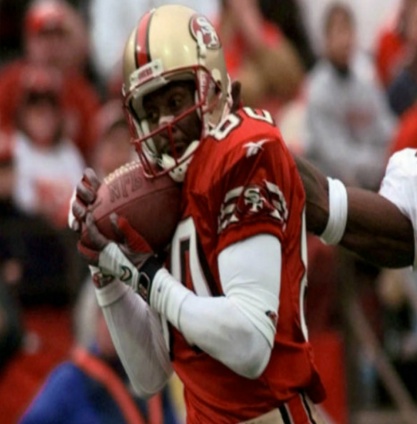
Jerry Rice, body catcher
You may have seen Jeff Janis pin the ball against his body at some point, because many of Janis’ targets are down the field where a snatch-and-pin catch technique may be necessary. Martavis Bryant often body catches deep balls, yet the incredible upside offered by Bryant’s overt athleticism dominates the narrative surrounding his dynasty stock. On the other hand, Janis’ bias-soaked haters focus more on the perceived stylistic flaws than Janis’ über athleticism.
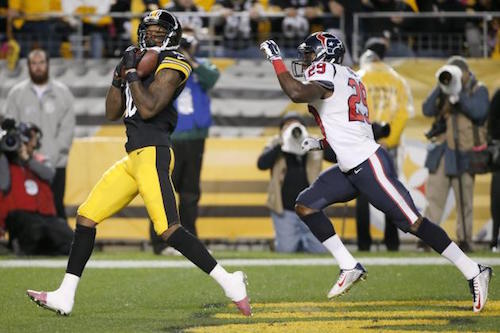
Martavis Bryant, body catcher
Secondly, does Jeff Janis have a limited route tree. According to Janis’ Reception Perception by Matt Harmon (@MattHarmon_BYB), Jeff Janis was targeted by Aaron Rodgers on 37.5-percent of his routes and converted all of his catchable targets even though the majority of Janis’ routes were greater than 10-yards deep. Janis’ Success Rate Versus Coverage (SRVC) was the highest among Packers receivers against Arizona. In the only professional game in which he received a majority of wide receiver snaps, Janis demonstrated a robust route inventory and was the most productive and efficient receiver on his team.
Route Breakdown:
1. Fly/Go/9-route: 31.3-percent
2. Slant: 31.3-percent
3. Corner: 9.4-percent
4. Dig: 9.4-percent
5. Curl: 6.3-percent
6. Post: 6.3-percent
7. Out: 3.1-percent
While Janis’ most memorable conversions occurred on go-routes, throughout the game, he also successfully converted slants, digs, and out routes.
Lastly, does Aaron Rodgers trust Jeff Janis? I don’t know. Nobody knows. The trust narrative manifested in a response to Evan Silva’s plea for the Green Bay Packers to take Jeff Janis more seriously:
@evansilva miscommunication early in the game was evidence of them not in the same page. Above talent, Rodgers values trust.
— Kevin Joseph (@kmannj) January 17, 2016
The early miscommunication cited above occurred early in the Arizona game. The errant throw could have been caused by Jeff Janis running the wrong route or by Aaron Rodgers simply missing a wide open receiver in the end zone. It is impossible to know. However, going back to Peyton Manning‘s days with the Colts, veteran quarterbacks have an unfortunate tendency to emasculate young receivers with a “you ran the wrong route” hand gesture in big moments. Let’s go ask Pierre Garcon if Janis ran the wrong route.
No empirical evidence exists that Jeff Janis runs imprecise routes or that Aaron Rodgers actually mistrusts Jeff Janis‘ route running. The narrative is propped up by circa Summer 2015 pull quotes from Packers beat reporters. The following circular logic bolsters this desperate critique that Janis is sloppy and untrustworthy:
“Jeff Janis is practicing with the second team offense, because Janis is incapable of building trust with Aaron Rodgers.”
“If you cannot win Rodgers’ trust, you can never be a valuable skill position player on the Green Bay Packers.”
“You cannot win Aaron Rodgers‘ trust if you do not practice with him.”
Jeff Janis not only rose up to the NFL level from Saginaw Valley State, he then solved the practice squad paradox outlined above with an epic playoff performance. If Janis haters last recourse is jumping inside the head of a teammate to extract a criticism, then the argument is officially over. The good guys win.
Mike McCarthy FAIL
No single person is to blame for a player being trapped in a practice squad paradox. If Jeff Janis demonstrated Victor Cruz-like polish on the practice field, he could have personally circumvented it. If Aaron Rodgers didn’t truly believe that he can win with a championship with any receiver off the street (see James Jones), he could have prevented it. However, the one person officially responsibility for setting the depth chart in Green Bay is Mike McCarthy.
Mike McCarthy could have saved us all a lot of trouble. The crux of the Janis hater narrative revolves around the general implication that Jeff Janis is definitely explosive, but he must be otherwise incompetent. Green Bay coaches refused to play Janis over below-replacement talents: James Jones, Davante Adams, Ty Montgomery, and Jared Abbrederis at various points during the 2015 NFL season. However, this assessment also assumes that Mike McCarthy is not only competent, he is above reproach.
JS Online’s Bob McGinn believes that Jeff Janis embodies the greatest coaching/personnel management mistake by Green Bay coaches in decades.
“It has been 25 years or more since a coach in Green Bay made more errors in allocating playing time than McCarthy did this year.”
According to McGinn, Mike McCarty’s refusal to utilize Jeff Janis on offense before the divisional round of the playoffs was a more egregious error than attempting multiple field goals on 4th-and-1 on the goal line against Seattle in the 2014 playoffs.
https://www.youtube.com/watch?v=oKbKmU8hahE
In his book Outliers, Malcolm Gladwell explains that disasters such as plane crashes are rarely caused by a single malfunction. Rather, a series of cascading errors is often the root cause. A string of errors by Mike McCarthy and his coaching staff resulted in Jeff Janis‘ underutilization throughout the 2015 season.
Mike McCarthy first erred when constructing his position coach roster. Rather than hiring a dedicated wide receivers coach, McCarthy hired Alex Van Pelt to oversee both quarterbacks and wide receivers with disastrous results. Local sports bloggers held Van Pelt responsible for failing to develop the highly touted Davante Adams and cult-hero athlete Jeff Janis. Beyond the young wide receivers, veteran skill position players from Aaron Rodgers to Randall Cobb suffered severe statistical regressions in 2015.
Splitting his time between two very different and highly specialized positions, Alex Van Pelt struggled to internally scout talent and misevaluated the skill position players under his tutelage. For example, during preseason camp, Van Pelt summarized Janis shortcomings:
“He’s a big guy so some of the routes do not cater to him. Some of the routes we run where there’s a lot of sudden change in movements, they just don’t fit the bigger players.”
Not all big receivers lack lateral agility. By quickly looking up Janis’ profile on PlayerProfiler.com, Alex Van Pelt would have discovered that Jeff Janis‘ 10.62 Agility Score is the best among receivers in his height/weight cohort.
After losing All-Pro split end/X receiver Jordy Nelson to a torn ACL, the Packers compounded the problem by failing to optimize their available skill position talent. Rather than replacing Nelson with the even more athletic Jeff Janis, the team instead signed James Jones to play split end.
Split end/X receivers line up on the wide side of the formation and succeed by leveraging elite speed and ball skills (see DeSean Jackson), exceptional size and physicality (see Brandon Marshall), or both (see Julio Jones). A 6-1, 31-year old receiver with below average speed, burst, and agility does not fit the profile of a productive NFL split end. James Jones is a slot receiver.
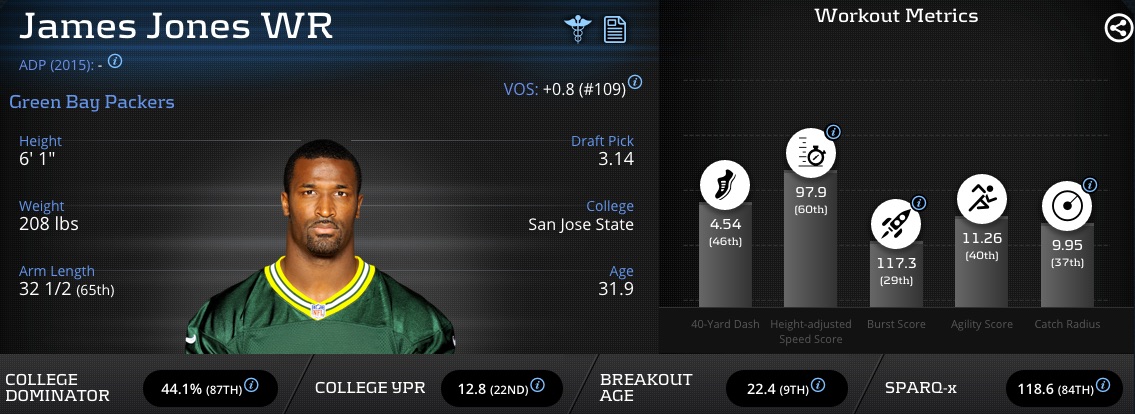
James Jones Advanced Metrics Profile
Mike McCarthy’s deployment of an aging slot receiver at split end/X was the single most egregious misallocation of skill position resources by an NFL coach in 2015. Lacking either a field stretcher on the outside or a receiver with a large catch radius to confidently throw it up in desperate moments, Aaron Rodgers suffered most of all. Rodger’s yards per attempt dropped from 8.43 in 2014 to 6.68 in 2015.
As the personnel errors cascaded, Mike McCarthy went on tilt by the middle of the season. He steadfastly refused to insert Jeff Janis and continued to start James Jones even though Jones averaged 2-receptions per game from week 5 through week 13 of the 2015 season. Based on camp reports, the Packers dismissed the idea of installing Jeff Janis as the team’s starting split end/X receiver for the entire regular season, because the coaching staff stubbornly believed Janis to be an imprecise route runner.
A single shortcoming dooms many NFL prospects. Wide receivers who run a 4.80-40 simply cannot play the position at the NFL level. However, marginalizing a player based on a subjective judgements, rather than empirical analysis, is dangerously error prone. By dismissing Jeff Janis based on anecdotal criticism, Mike McCarthy’s player evaluation methodology proved to be no more sophisticated than those employed by the legions of fake Todd McShay’s on #DraftTwitter — the same zombies who criticized a 20-year old Devin Funchess for “lacking courage at the catch point” and a 224-pound David Johnson for being “scared to run inside.”
Is Calvin Johnson a good route runner? Is Alshon Jeffery a good route runner? How is route running precision measured? Even if route running precision could be measured and quantified, it matters least for the most athletic wide receivers who achieve separation with uncaged vertical explosion more than refined technique. Who are the top-10 route runners in the NFL? No one knows. Though on September 10, 2015, Reggie Wayne was indisputably a top-10 route runner in the NFL, and it did not matter. Wayne lacked the speed and burst to separate from NFL defenders and was released by the New England Patriots.
The Real Truthers
Jeff Janis enthusiast are not “truthers.” Janis believers simply have conviction.
All the King’s Janis
https://www.youtube.com/watch?v=4hebjXXeo2I
The “truther” pejorative implies a irrational faith in a player’s intrinsic ability that extends long after the majority has given up hope of an ascendence or revival. The dynasty owner who stashed Julian Edelman for four years is a truther. A smart truther. On the other hand, believers in Jeff Janis, Willie Snead, Vincent Jackson and Antonio Brown simply recognized that small school receivers are capable of ascending to NFL superstardom despite a lack of draft capital and/or a dormant year or two on the roster.
Julian Edelman and Jeff Janis have a lot in common, but Janis has developed faster, because he played wide receiver in college. We have already beared witness to a Janis 30-plus fantasy point game. He does not require the same leap of faith as Edelman. What more did you want Jeff Janis to do in his only game with 3-quarters of snaps with Aaron Rodgers than 7-receptions, 145-yards, and two touchdowns in the Divisional Round of the NFL Playoffs?
Jeff Janis is high ceiling prototypical fantasy WR1 whose career is pointed in the launch position. Janis’ career trajectory was forever changed in a Packers playoff loss and no amount of baseless undermining of his skills and ability by a nebulus hate cloud will prevent Jeff Janis from developing into a perennial fantasy-relevant asset.
Jeff Janis has moved beyond lotto ticket stash and has become the favorite to land the Packers No. 3 WR job. That role is coveted, because the Packers base offense features three wide receivers. In a 3-wide configuration, Jeff Janis fits best at split end/X with Jordy Nelson, now in his early thirties, sliding into the flanker/Z role, and Randall Cobb operating in his usually successful slot/Y receiver role.
Given Jeff Janis‘ history of production, elite athleticism and seamless fit within the Packers’ ideal passing game configuration, Janis should theoretically be drafted where Davante Adams was being drafted in January-July, 2015. Before Jordy Nelson‘s torn ACL caused Adams’ ADP to skyrocket to unreasonable heights across all formats, Adams’ average draft position in redraft formats was late seventh round. In dynasty formats, his ADP was late fourth round. But an inexplicable Janis hate cloud has descended on the fantasy football community. Janis’ will likely be available many rounds later, particularly in redraft formats such as MFL10s…. unless of course, I am in the draft room.


